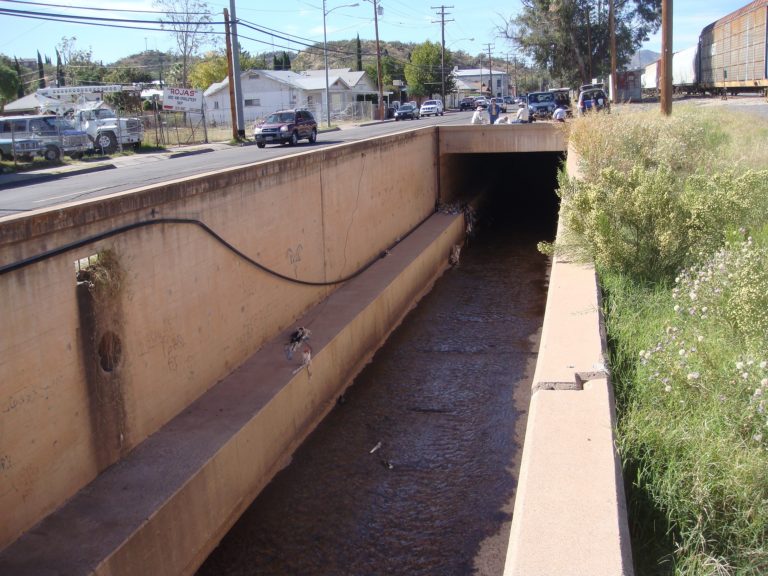“Flirting With Disaster” Film Puts Spotlight on a Looming Public Health Threat in Nogales, Arizona
By: Blue Evening Star

Blue Evening Star is a representative of Friends of the Santa Cruz River
Every storm that hits Nogales, AZ puts pressure on the deteriorating, leaky sewage pipe that carries more than 14 million gallons of sewage daily, mostly from Mexico, right through the small city of Nogales, AZ to the Nogales International Wastewater Treatment Plant (NIWTP) in Rio Rico, AZ.
This pipe, the International Outfall Interceptor (IOI), was constructed in 1971. Its path to the NIWTP lies mostly under the Nogales Wash. It is protected from erosive flood flows only by the concrete-lined floor of the Wash and several feet of dirt. Only about half of the original IOI pipe thickness remains due to over 40 years of wear and tear.
Because of upstream urbanization and its deteriorated condition, the IOI is in danger of becoming exposed and bursting every year during heavy summer monsoon flood flows in the Nogales Wash. Additionally, the IOI continues to leak raw sewage into the groundwater aquifer system that provides drinking water for most of the community.
The Nogales Wash channel and the IOI have outlived their useful life and capacity. A failure of either could have devastating impacts on property and public health. In addition, habitat for the newly returned Gila topminnow, an endangered species, could be compromised just as this native fish is being reestablished in its native Santa Cruz River into which the Nogales Wash flows.
Friends of the Santa Cruz River commissioned a short video documenting the IOI problem to inform as many people as possible and to create a unified voice to urge federal decision makers to fund a proper repair for this failing infrastructure complex.
Federal legislation to remove financial responsibility for IOI repair from the City of Nogales, AZ has not progressed in the legislature and there are currently no introduced bills to actually fund needed repairs.
Friends of the Santa Cruz River is hoping pressure from the local government and community members will secure federal funding for the International Boundary and Water Commission, (which runs the NIWTP and oversees environmental infrastructure along the border) to repair the line with a plastic sleeve.
There are bigger issues that also need to be addressed, including the need for more and bigger retention basins and other water harvesting methods in Nogales, Sonora, Mexico to reduce peak flood flows in the Wash. In order to protect the region from the potentially devastating pollution caused by a burst IOI during a big flood, a more permanent solution than the plastic sleeve in the IOI is needed. In order to find a solution that serves the entire watershed, extensive research will have to be done but the plastic sleeve repair of the IOI is a good place to start.
*Photo by Hans Huth